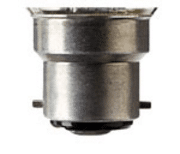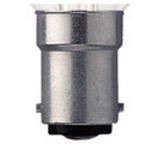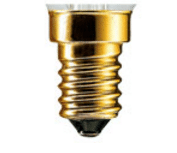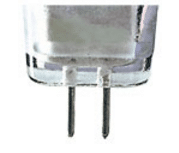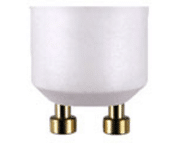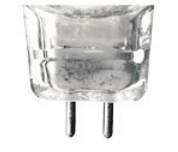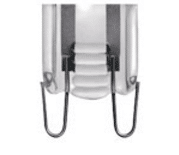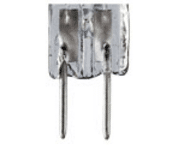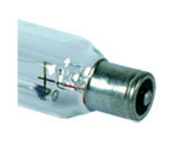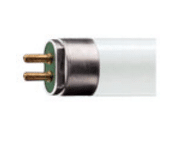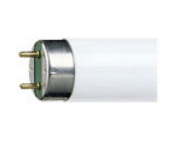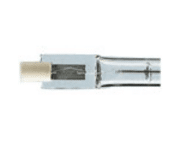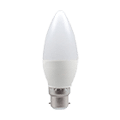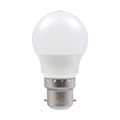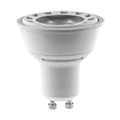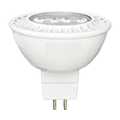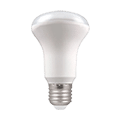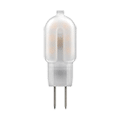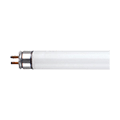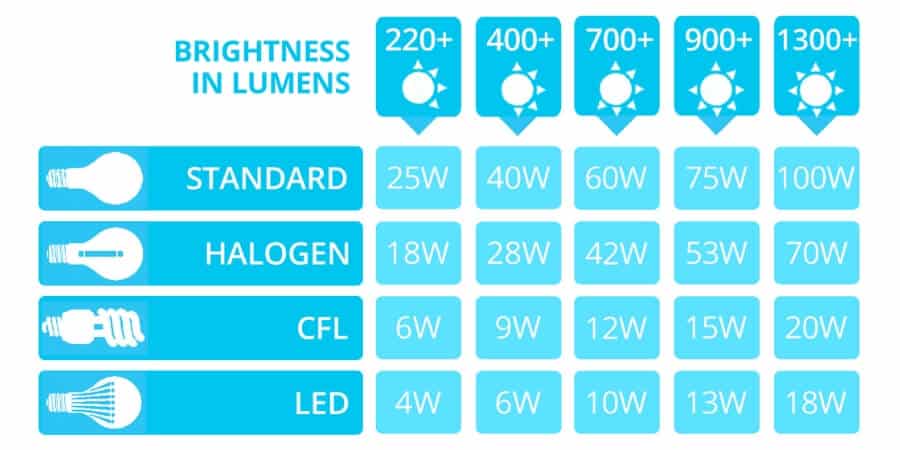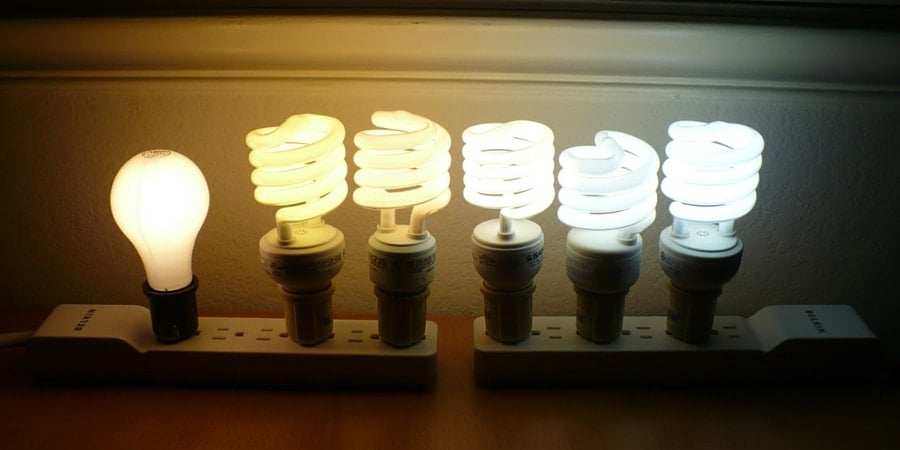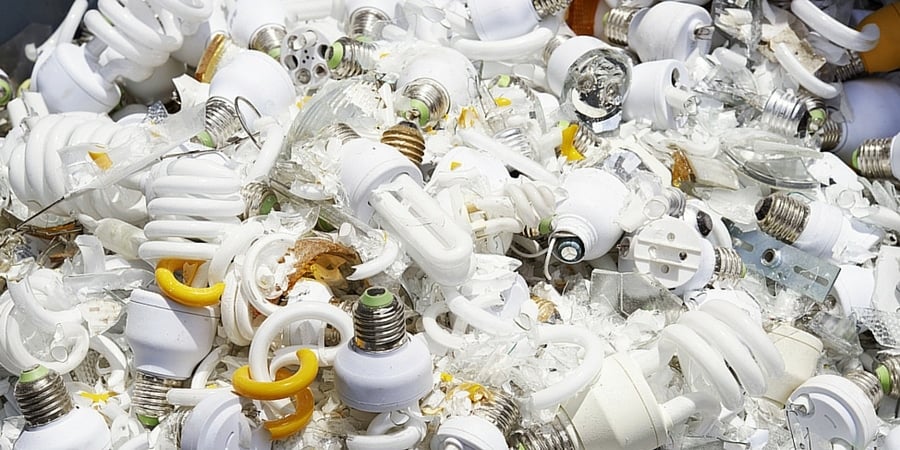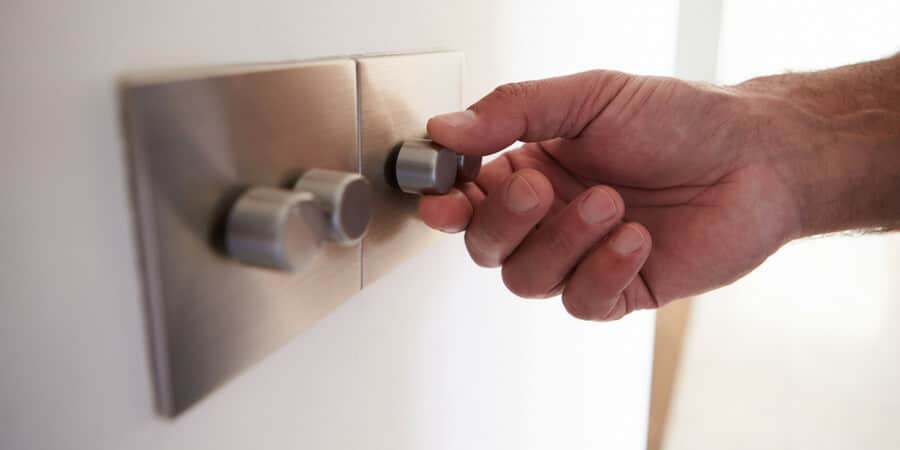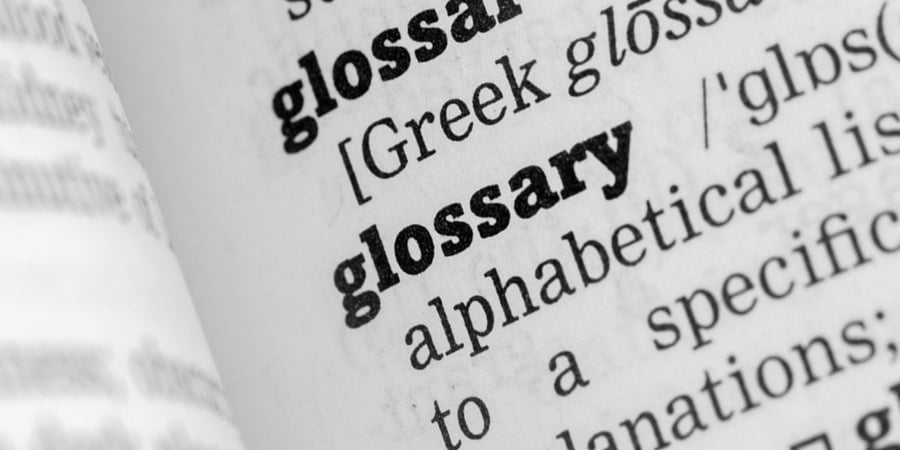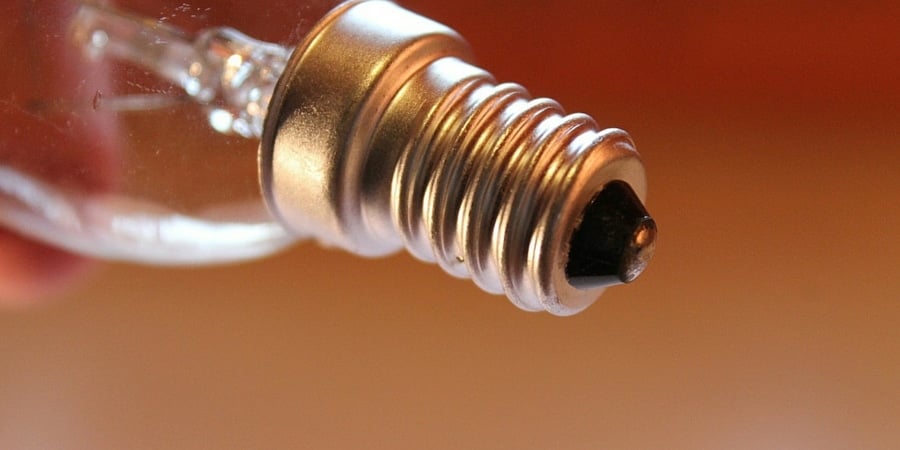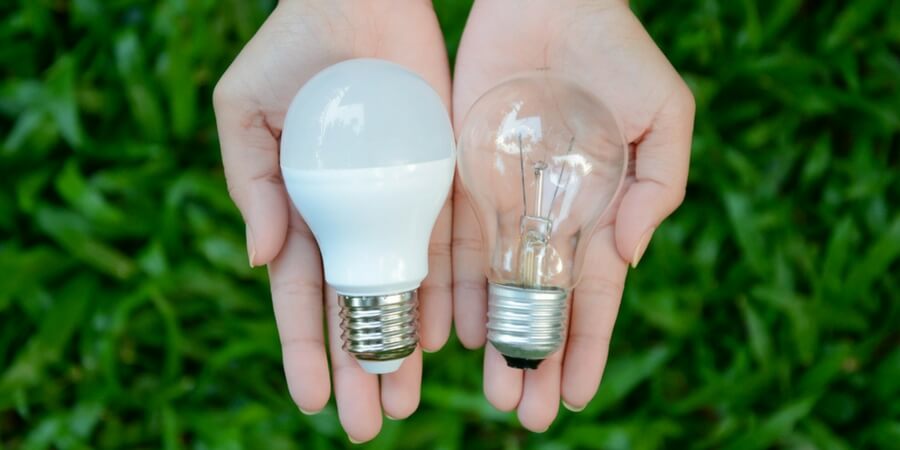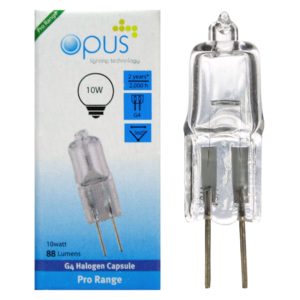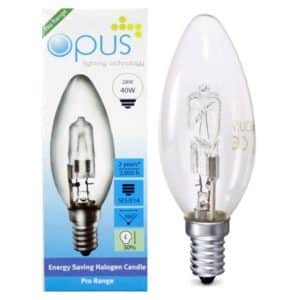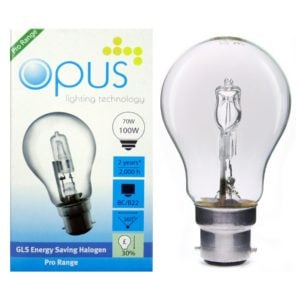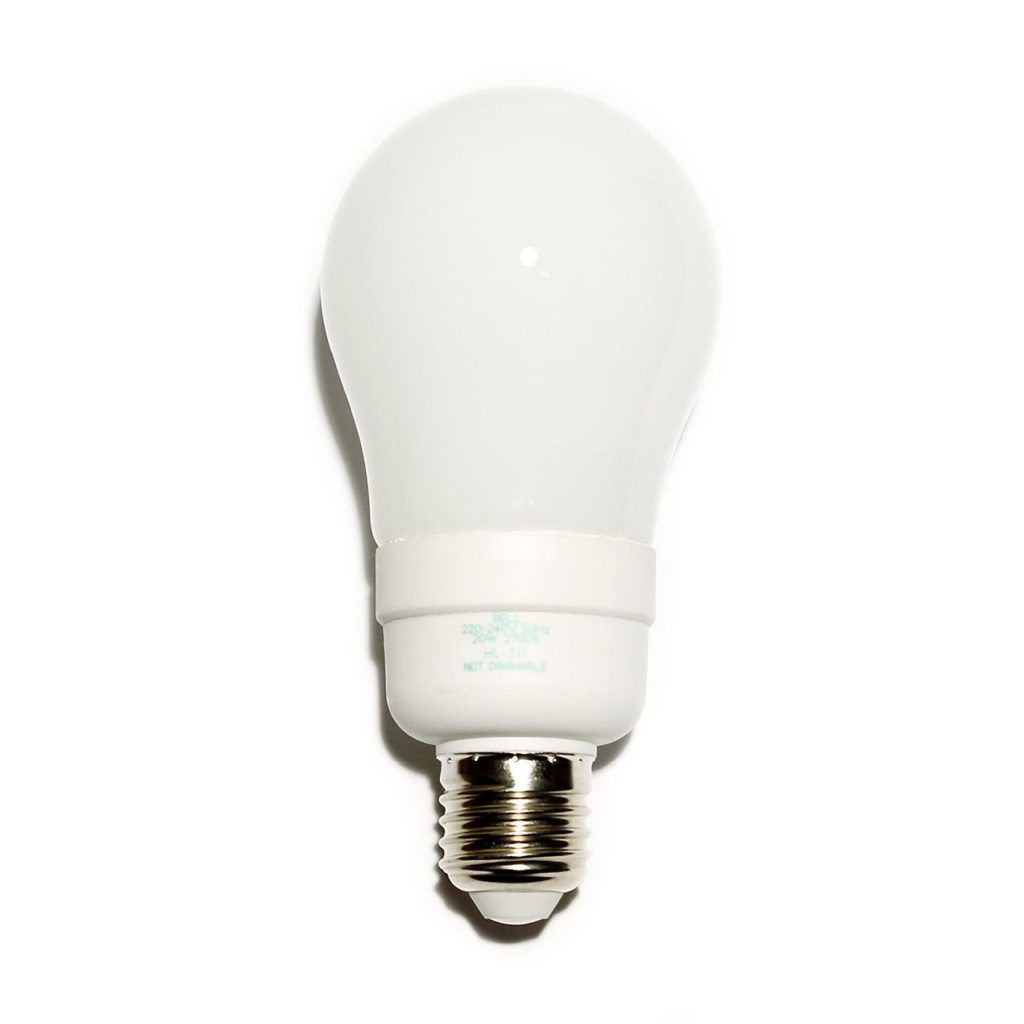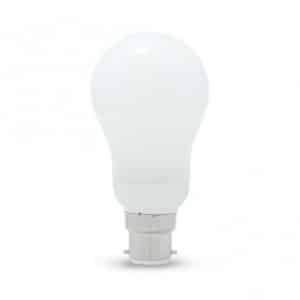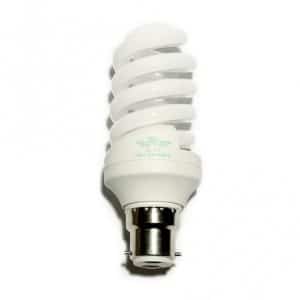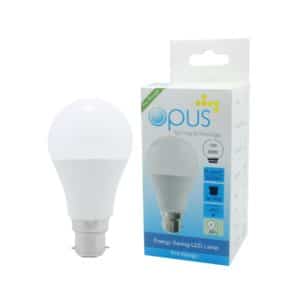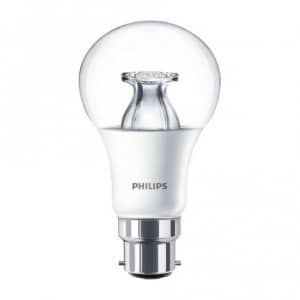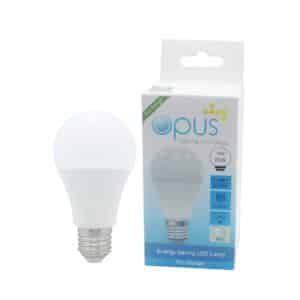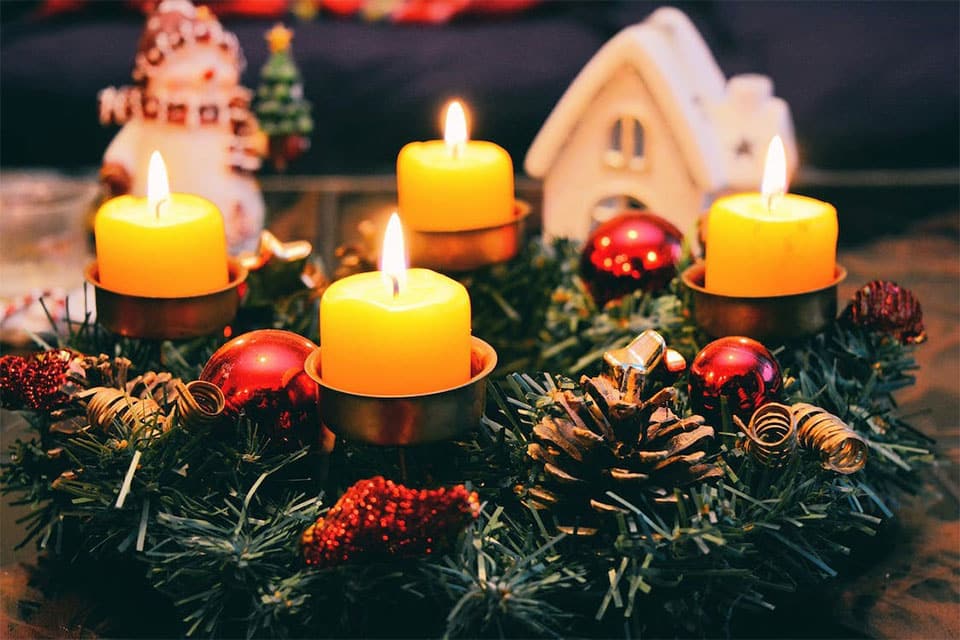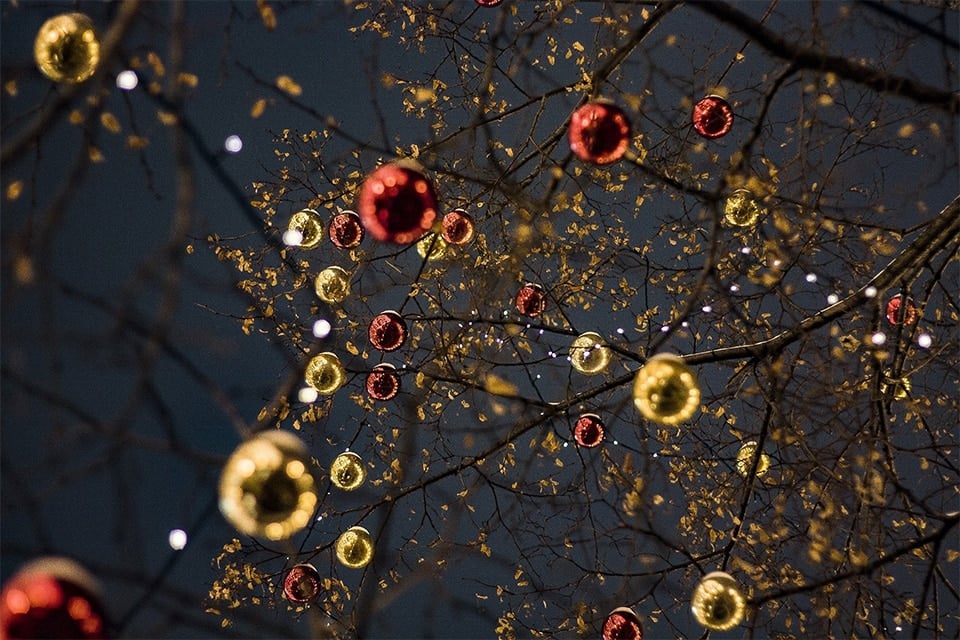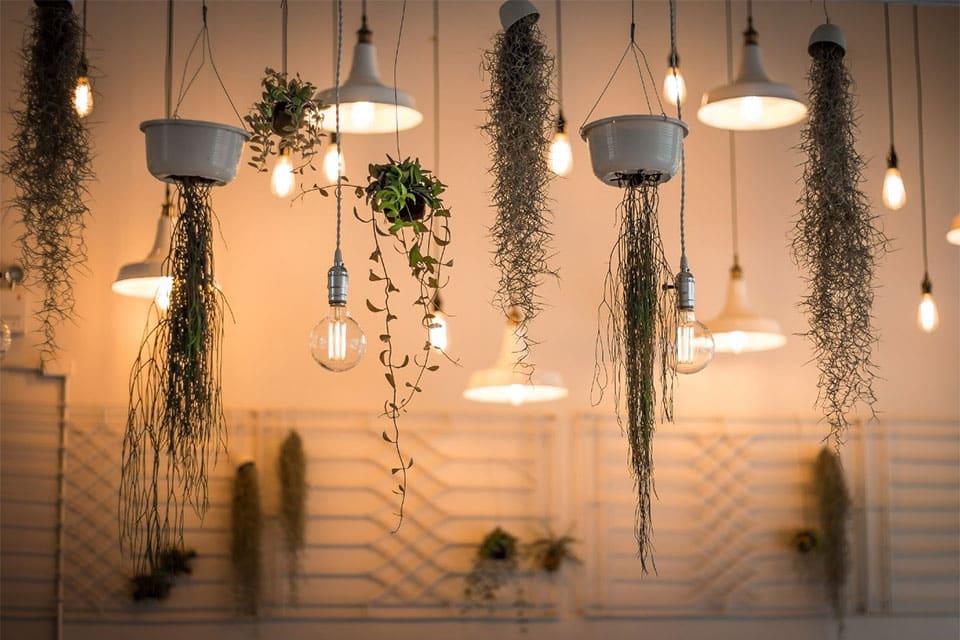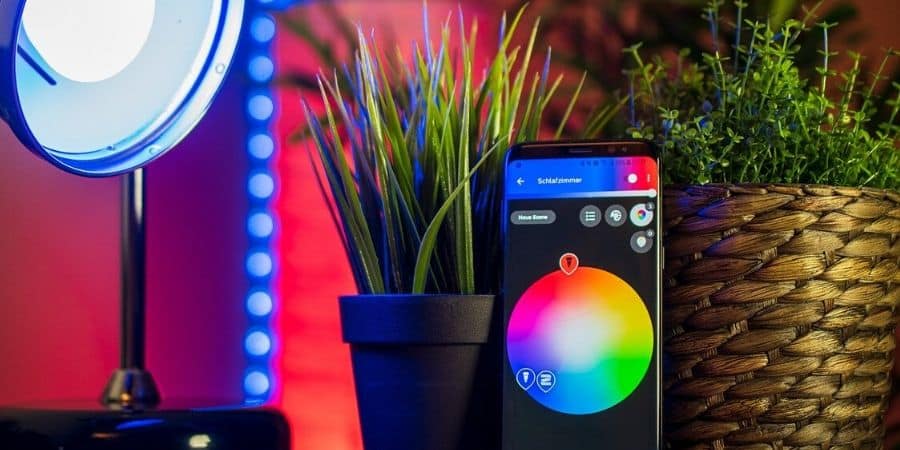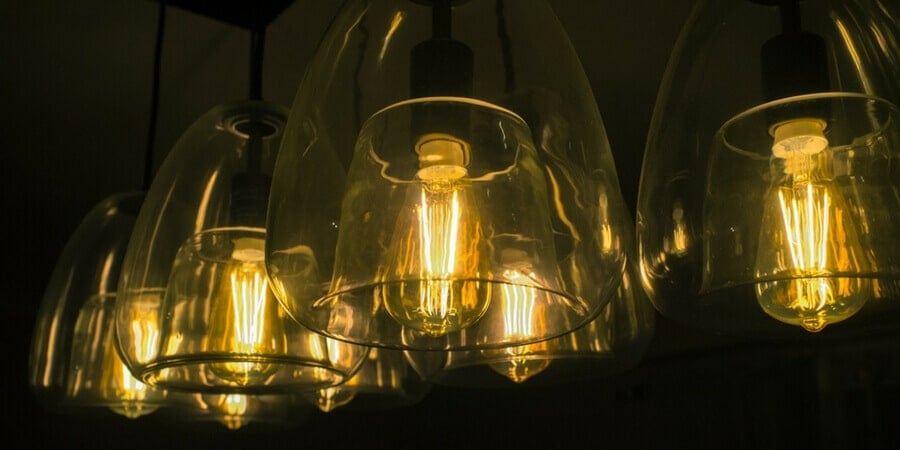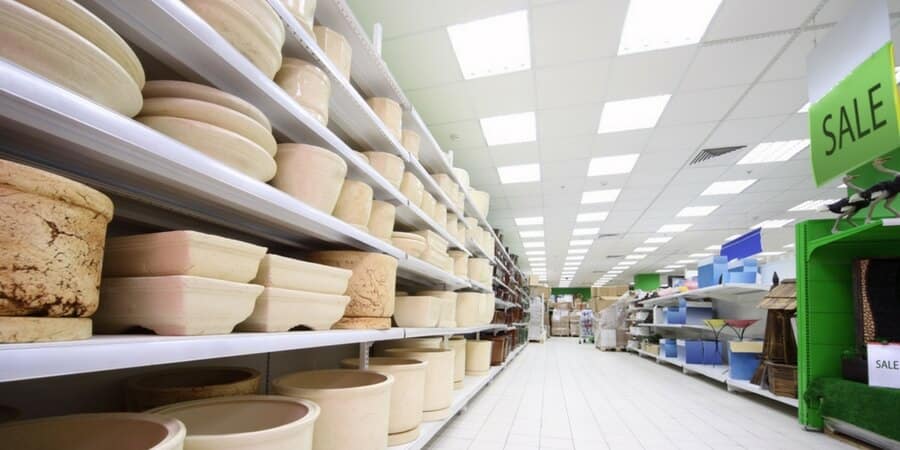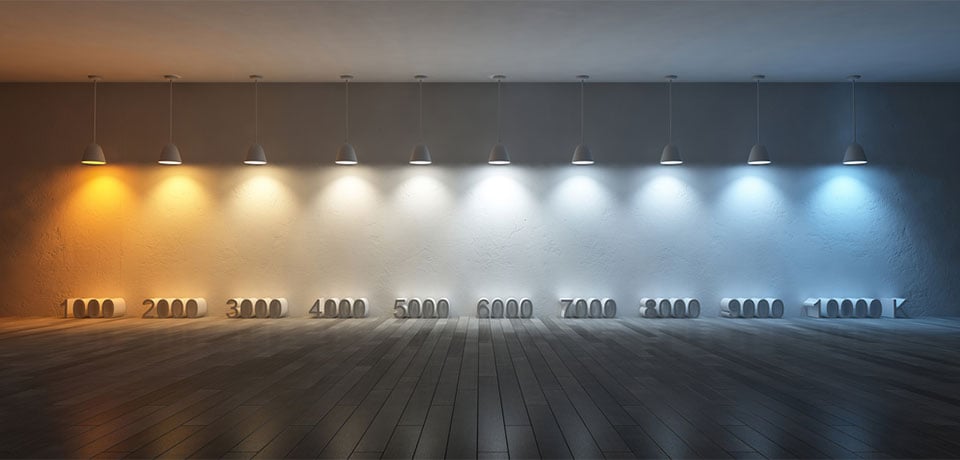There’s never been more energy-efficient ways to light your home or business, but it can be difficult to keep up as the technology continues improving and older products are phased out.
With that in mind, we’ve created a guide comparing the most commonly used bulbs. Let’s start with a brief overview of the three main options:
- Incandescent and halogen bulbs
- Compact fluorescent lamps (CFLs)
- Light emitting diodes (LEDs)
Incandescent & Halogen
Average Rated Lifespan | Dimmable? | Average Cost |
|---|---|---|
| 1,000-2,000 hours | Yes | £1 – 6 (Incandescent) £1 – 12 (Halogen) |
Incandescent
Incandescents are the most recognizable and most prevalent light bulbs, and are the type you probably had in your home growing up. They’re called “incandescent” because they use a filament, usually made of tungsten, that is heated by electricity until it becomes incandescent (glowing). That’s why these bulbs get hot to the touch and should not be handled or placed near flammable items until they’ve had time to cool.
Compared to other bulbs, incandescents are inefficient and easy to break. As a result, governments around the world have been phasing them out, and many manufacturers have already stopped producing them, making them difficult to come by much earlier than their mandated phase-out dates:
Incandescent Phase-out Timeline |
|
|---|---|
| Date | Products Phased Out |
| September 2009 | Clear 100W+ incandescent bulbs Frosted finish bulbs that don’t have an A energy rating |
| September 2010 | 75W clear incandescent bulbs |
| September 2011 | 60W clear incandescent bulbs |
| September 2012 | Remaining clear incandescent bulbs under 60W |
| February 2016 | Phasing out special purpose incandescents |
| September 2016 | Directional mains-voltage halogen bulbs (ex. GU10) |
| September 2018 | Non-directional halogen bulbs (i.e. candle, GLS, globe, golf ball) |
In spite of its inefficiencies, this bulb is much beloved by those who are finding it difficult to part with the classic shape, colour and glow of the original light bulb. The good news is that incandescent bulbs have not yet been outright banned, and they are still available to purchase while supplies last. So, if your heart is set on incandescent, now’s the time to stock up.
Most incandescent bulbs you find now will be specialty bulbs, such as candle and other decorative bulbs, or rough service bulbs designed to withstand use in appliances. This is because these bulbs have not yet been adequately replaced by newer technologies.
Shop our full selection of incandescents.
Halogen
Halogen bulbs are a type of incandescent bulb. They work the same way as standard incandescents, but use less energy and last longer because they contain halogen gas, which helps extend the life of the tungsten filament.
Shop our full selection of halogen bulbs.
Learn more in our guide to buying halogen bulbs.
Compact Fluorescent Lamps (CFLs)
Average Rated Lifespan | Dimmable? | Average Cost |
|---|---|---|
| 8,000 hours | Select products | £2 – 13 |
Compact fluorescent bulbs were the first contender for replacing incandescent bulbs.
Instead of relying on a filament, these bulbs operate like fluorescent tubes: two ballasts on either end conduct an electric current through the tubes, which are filled with gas and lined with a phosphor coating. The current reacts with the gas and produces ultraviolet light, which becomes visible light as it passes through the phosphor coating.
In spite of their improved efficiency and lower operating costs, CFLs didn’t hit the ground running. Slow warm-up times and cool colour temperatures made the adoption of this type of bulb slow and sporadic, but they have greatly improved over the years and are now available in warmer colours, dimmable options, and with faster warm-up times.
CFLs are more durable, longer lasting and more energy-efficient than incandescent and halogens, making them a viable alternative for replacing your bulbs without breaking the bank. However, there are some drawbacks to keep in mind:
- Turning CFLs on and off quickly shortens their lifespan.
- Unless specially marked, they don’t perform well in outdoor conditions – especially cooler weather.
- Some CFL bulbs still suffer from a delay between switching the bulb on and full brightness.
- They contain a small amount of mercury, which can be dangerous to handle and means they have to be recycled somewhere that accepts hazardous waste. Learn how to dispose of your used bulbs.
Shop our full selection of CFL bulbs.
Read our CFL guide to learn more.
Light Emitting Diodes (LEDs)
Average Rated Lifespan | Dimmable? | Average Cost |
|---|---|---|
| 25,000+ hours | Select products | £2 – 12 |
An LED is a type of diode that emits photons as light instead of heat.
LEDs have been in the works for a long time – since the early 1900s! It took over a hundred years and a number of inventors, engineers and innovators for a commercially viable LED bulb to hit the shelves. The first LEDs were green, but in the mid-90s, high-brightness blue LEDs were introduced. This resulted in the invention of white LEDs suitable for use in light bulbs, which first became available commercially in 2002.
Now that the technology is better understood, LEDs are quickly overtaking their predecessors in terms of popularity. They were met with hesitance at first because of their cool colours and unusual shape, but LEDs have since become a superior technology and now boast a number of benefits you won’t find in other bulbs.
Extremely efficient, long-lasting, and capable of replicating a number of colours and colour temperatures, LEDs are an environmentally-friendly option that should be at the top of your list when looking for light bulbs.
To learn more about LEDs and how they work, check out our guide.
Warm White GLS
with Bayonet Cap
(Dimmable)
Warm White GLS
with Bayonet Cap
(Dimtone)
Warm White GLS
with Screw Cap
(Dimmable)
Need something specific? Browse our full selection of LED bulbs.
Which Bulb is Better?
You may already have a clear winner in mind, but to make it easy for you to directly compare these light bulbs, we’ve created a table that looks at several key factors, including:
- Environmental Impact – watts, CO2 emissions, heat generation
- Aesthetics – dimming, colour temperature
- Convenience – replacements, warm-up time, disposal, durability, weather sensitivity
- Expense – initial purchase, cost of electric
|
|||
|---|---|---|---|
| Type | Incandescent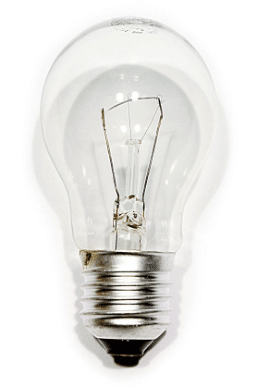 | CFL | LED |
| Watts | 60W | 14W | 10W |
| Average Rated Lifespan | 1,000-2,000 hours | 8,000 hours | 25,000+ hours |
| Initial Cost | £2-6 | £2-13 | £2-12 |
| Dimmable? | |||
| # of Replacements in 25,000 Hours | 15-20 | 3 | 0-1 |
| Colour Temperature Range | Warm white | Warm white to daylight | Warm white to daylight |
| Cost Per Year to Operate | £23.88 | £5.07 | £3.60 |
| Heat Generation | Releases 90% of energy as heat radiation | None | Beam emits no heat |
| Heat Sensitivity | No | Yes | Some |
| Cold Sensitivity | No | Yes | No |
| Moisture Sensitivity | Some | Yes | No |
| CO2 Emissions per Year | 172.68 kg | 44.02 kg | 28.80 kg |
| Warm-up Time | Instantaneous | Slight delay | Instantaneous |
| Impact of Switching On/Off | Some effect | Shortens lifespan | No effect |
| Physical Durability | - Fragile filament - Glass bulb | _ No filament - Typically made of glass | + No filament + Often made of durable plastic |
| Disposal |
|
|
|
| Additional Features | + Coloured bulbs (gels) | + Coloured bulbs (coating) | + Coloured and colour changing bulbs (light) + Smart home-compatible + Capable of supporting greenhouse production |
A Bright Future
While personal preference accounts for a lot and can have a major impact on what bulb you ultimately select, LEDs are unquestionably the best choice you can make. They offer the most benefits and features – as well as the fewest drawbacks – of any light bulb.
If you need any help selecting the right light bulb or have any questions, reach out to us at +44 (01869) 362222 or [email protected].


